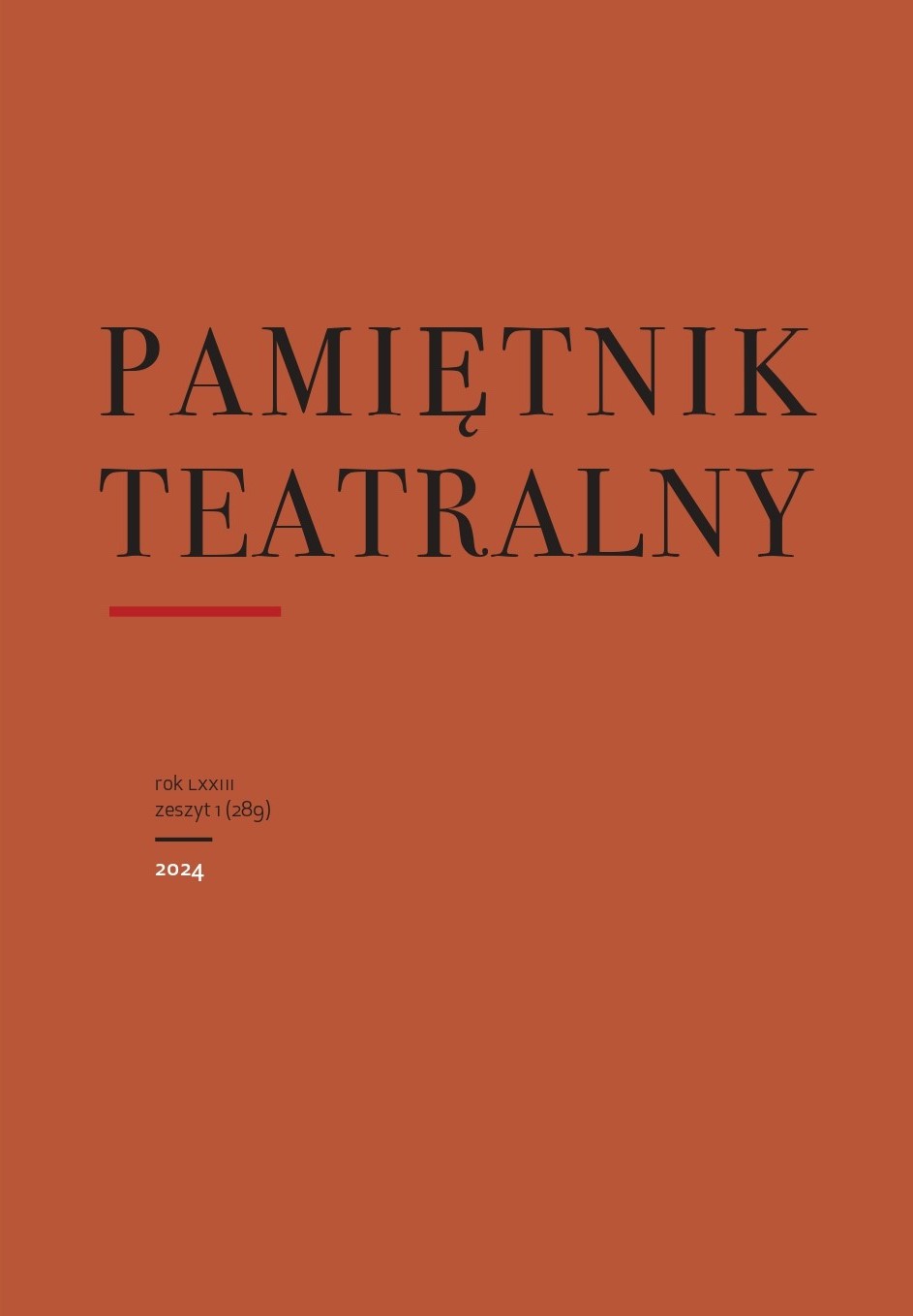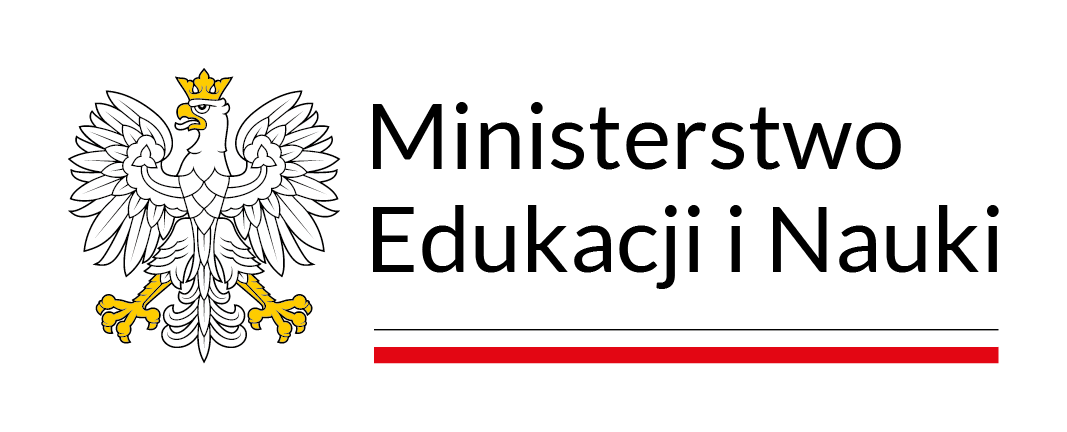Przestrzeń emblematyczna
Tomasz Kubikowski
Akademia Teatralna im. Aleksandra Zelwerowicza w Warszawie (Polska)
https://orcid.org/0000-0002-1028-9624
Abstrakt
W artykule autor śledzi związki sztuki teatru ze sztuką emblematu. Wychodząc od dzieł Albrechta Schönego i posiłkując się współczesną teorią emblematu, stawia tezę, że obydwie sztuki wykorzystują zjawisko performansu, z którym wiążą się nierozerwalnie. Strukturę emblematyczną można odnaleźć zarówno w trwałych zaczątkach teatralnego performansu (dramat lub scenariusz), jak i w jego pozostałościach (dokumenty dzieła). Emblemat stanowi więc ostateczne medium oddziaływania teatru na najdalszy społeczny dystans, kiedy zanikł wszelki żywy kontakt odbiorców ze zjawiskiem. Teatr szczególnie nastawiony na społeczną misję, najchętniej sięga do środków sztuki emblematu. Tytułowa „przestrzeń emblematyczna” – to abstrakcyjna kategorialna przestrzeń, którą ustanawia i w której zachodzi performans życiowy, społeczny czy sceniczny. Otwiera się ona w powszechnej świadomości jako jego „scena”. W teatrze takie przestrzenie powołuje się programowo; w życiu powszednim tworzą się one samorzutnie, jako emanacje zbiorowych oczekiwań lub nadziei, albo poprzez działania jednostek.
Instytucje finansujące
Słowa kluczowe:
performatyka, emblemat a teatr, teatr społeczny, teoria emblematuBibliografia
Alciatus, A. (2002). Emblematum libella: Książeczka emblematów (M. Mejor et al., tłum.). Warszawa: Uniwersytet Warszawski.
Google Scholar
Benjamin, W. (2013). Źródło dramatu żałobnego w Niemczech (A. Kopacki, tłum.). Warszawa: Wydawnictwo Sic!.
Google Scholar
Boal, A. (1999). Without Symbols There Would Be No Civilisation. European Journal of Arts Education, 2, 2.
Google Scholar
Brecht, B. (1955). Małe organon dla teatru (A. Sowiński, tłum.). Pamiętnik Teatralny, 1.
Google Scholar
Clements, R.J. (1960). Picta Poesis: Literary and Humanistic Theory in Renaissance Emblem Books. Rome: Edizioni di Storia e Letteratura.
Google Scholar
Daly, P.M. (1998). Literature in the Light of the Emblem: Structural Parallels between the Emblem and Literature in the Sixteenth and Seventeenth Centuries. Toronto: University of Toronto Press.
Google Scholar
Daly, P.M. (2014). The Emblem in Early Modern Europe: Contributions to the Theory of the Emblem. Farnham: Ashgate.
Google Scholar
Diderot, D. (1751). Lettre sur les sourds et muets: à l'usage de ceux qui entendent & qui parlent. https://archive.org/details/lettresurlessou00didgoog/page/n67/mode/2up/search/emblematique.
Google Scholar
Grotowski, J. (2012). Teksty zebrane (A. Adamiecka-Sitet et al., red.). Warszawa: Wydawnictwo Krytyki Politycznej.
Google Scholar
Harsdörffer, G.P. (1644). Frauenzimmer Gesprechspiele, so bey Ehr- und Tugendliebenden Gesellschaften, mit nutzlicher Ergetzlichkeit, beliebet und geübet werden mögen. Nürnberg: Wolfgang Endter. http://mdz-nbn-resolving.de/urn:nbn:de:bvb:12-bsb10431567-2
Google Scholar
Heckscher, W.S., Wirth, K.A. (1959). Emblem, Emblembuch. W: Reallexikon zur Deutschen Kunstgeschichte, V, 85–228. http://www.rdklabor.de/w/?oldid=93191
Google Scholar
Henkel, A., Schöne, A. (red.). (1967). Emblemata: Handbuch zur Sinnbildskunst des XVI und XVII Jahrhunderts. Stuttgart: Metzler.
Google Scholar
Kubikowski, T. (2004). Reguła Nibelunga: Teatr w świetle nowych badań świadomości. Warszawa: Akademia Teatralna.
Google Scholar
Kubikowski, T. (2015). Przeżyć na scenie. Warszawa: Akademia Teatralna.
Google Scholar
Kubikowski, T. (2019). Zjadanie psów. Warszawa: Akademia Teatralna, Instytut Teatralny.
Google Scholar
Lehmann H.T. (2004). Teatr postdramatyczny (D. Sajewska, M. Sugiera, tłum.). Kraków: Księgarnia Akademicka.
Google Scholar
Michałkowa, J. et al. (red.). (1981). Ars Emblematica: Ukryte znaczenia w malarstwie holenderskim XVII w. Warszawa: Muzeum Narodowe.
Google Scholar
Miedema, H. (1968). The Term Emblema in Alciati. Journal of the Warburg and Courtauld Institutes, 31, 234-250. https://doi.org/10.2307/750643
DOI: https://doi.org/10.2307/750643
Google Scholar
Pelc, J. (2002). Słowo i obraz: Na pograniczu literatury i sztuk plastycznych. Kraków: Universitas.
Google Scholar
Peters, J. S. (2003). Theatre of the Book 1480—1880: Print, Text and Performance in Europe. Oxford: Oxford University Press. https://doi.org/10.1093/acprof:oso/9780199262168.001.0001
DOI: https://doi.org/10.1093/acprof:oso/9780199262168.001.0001
Google Scholar
Piscator, E. (1983). Teatr polityczny (R. Szydłowski, tłum.). Warszawa: WAiF.
Google Scholar
Praz, M. (1964). Studies in Seventeenth–Century Imagery. Roma: Edizioni di storia e Letteratura.
Google Scholar
Praz, M. (1981). Mnemosyne: Rzecz o powinowactwie literatury i sztuk plastycznych (W. Jekiel, tłum.). Warszawa: PIW.
Google Scholar
Ripa, C. (1998). Ikonologia (I. Kania, tłum.). Kraków: Universitas.
Google Scholar
Scholz, B.F. (2002). Emblem und Emblempoetik: Historische und systematische Studien. Berlin: Erich Schmidt Verlag.
Google Scholar
Schöne, A. (1964). Emblematik und Drama im Zeitalter des Barock. München: C. H. Beck’sche Verlagsbuchhandlung.
Google Scholar
Steinborn, B, (2014). Czy muzealnik jest naukowcem?: Kilka uwag praktyka. Muzealnictwo, 55.
DOI: https://doi.org/10.5604/04641086.1122760
Google Scholar
Surma-Gawłowska, M. (2015). Komedia dell’arte. Kraków: Universitas.
Google Scholar
Szyrocki, M. (1969). Dzieje literatury niemieckiej. Warszawa: PWN.
Google Scholar
Tatarkiewicz, W. (1967). Historia estetyki. Wrocław: Ossolineum.
Google Scholar
Wagner, R. (1904). Sztuka i rewolucya. Lwów: Polskie Towarzystwo Nakładowe.
Google Scholar
Whitmore, J. (1994). Directing Postmodern Theatre. Ann Arbor: The University of Michigan Press.
DOI: https://doi.org/10.3998/mpub.23644
Google Scholar
Yates, F.A. (1977). Sztuka pamięci. (W. Radwański, tłum.). Warszawa: PIW.
Google Scholar
Autorzy
Tomasz KubikowskiAkademia Teatralna im. Aleksandra Zelwerowicza w Warszawie Polska
https://orcid.org/0000-0002-1028-9624
Prof. dr hab. Tomasz Kubikowski – profesor Akademii Teatralnej w Warszawie, kierownik literacki Teatru Narodowego. Autor książek: Siedem bytów teatralnych (1994), Reguła Nibelunga (2004), Teatralne doświadczenie Wilhelma Meistra (2014), Przeżyć na scenie (2015), Zjadanie psów (2019). Tłumacz książek m. in. Richarda Schechnera i Jona McKenziego. Wraz z Edytą Kubikowską edytor Raptularza Zbigniewa Raszewskiego (2004), wraz z Magdaleną Raszewską redaktor siedmiotomowych Dziejów Teatru Narodowego (2015). Członek Komitetu Nauk o Sztuce PAN (2015–2019) i rad redakcyjnych czasopism „Performer” i “Stanislavski Studies”.
Statystyki
Abstract views: 880PDF downloads: 374 PDF downloads: 779
Licencja
Prawa autorskie (c) 2020 Tomasz Kubikowski

Utwór dostępny jest na licencji Creative Commons Uznanie autorstwa – Użycie niekomercyjne – Bez utworów zależnych 4.0 Międzynarodowe.
Autor/ka udziela niewyłącznej i nieodpłatnej licencji (CC BY 4.0) na wykorzystanie tekstu w "Pamiętniku Teatralnym", zachowuje nieograniczone prawa autorskie, ale zobowiązuje się do podawania miejsca pierwodruku przy ponownym wykorzystaniu artykułu (umowa licencyjna do pobrania). Zgłaszając artykuł do publikacji, autor/ka wyraża zgodę na jego udostępnianie na licencji CC BY 4.0.
Od zeszytu 1/2018 do zeszytu 3/2022 artykuły publikowane były na licencji CC BY-NC-ND 4.0. W tym okresie autorzy/ki udzielali niewyłącznej i nieodpłatnej licencji (CC BY-ND 4.0) na wykorzystanie tekstu w "Pamiętniku Teatralnym", zachowywali nieograniczone prawa autorskie, ale zobowiązywali się do podawania miejsca pierwodruku przy ponownym wykorzystaniu artykułu.
Inne teksty tego samego autora
- Tomasz Kubikowski, Rzetelność jako podstawa/dyrektywa , Pamiętnik Teatralny: Tom 72 Nr 1 (2023): Molière: Powroty (z blokiem tematycznym według koncepcji Patryka Kenckiego)
- Tomasz Kubikowski, Ramy poznawcze , Pamiętnik Teatralny: Tom 74 Nr 2 (2025): Ramy poznawcze









